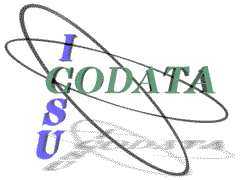Senckenberg Research Institute and Museum, Frankfurt
Botanical Garden and Botanical Museum Berlin-Dahlem
Senckenberg Research Institute and Museum, Frankfurt |
Botanical Garden and Botanical Museum Berlin-Dahlem |
TDWG 2000: Digitising Biological Collections
Taxonomic Databases Working Group, 16th Annual Meeting
Senckenberg Museum, Frankfurt, Germany, November 10-12, 2000
* Museum of Texas Tech University, Box 43191, Lubbock, TX 79409-3191
[Poster presentation]
There are many circumstances under which access to a voucher specimen is limited or impossible. With the development of world-wide electronic communications, digital imagery, and widespread access electronic databases, it is possible to better serve the scientific needs of researchers and to optimize the role and value of systematic collections. The applications of electronic voucher images extends to zoo specimens, endangered species, mark and recapture studies, contaminated specimens (carcinogens, radioactive material), private holdings, and other situations. The development of molecular methods which exploit tiny amounts of tissue to address issues of systematics, biodiversity, genetics, ecotoxicology, and disease reinforce the need for maximum information to document the species under study. It is clear that museum should not lessen their demands for classical voucher specimens to serve the needs of the scientific community. Nonetheless, in situations where it is not possible to secure a classical voucher specimen, e-vouchers can partially fill that need. An e-voucher is defined as a digital image that is a component of a classical specimen (in the same way karyotypes, tissues, etc. are components of specimens). As with other components, the e-voucher can, when necessary, be the only "part" saved or it may be a part of a more complete set. The use of e-vouchers can strengthen the collection by allowing greater access by scientists and by reducing deterioration due to excessive handling. Such access may include providing access to images of specimens on-line, transmission of images to potential users and interactive collection browsing.
TDWG | Participants | Presentations | Senckenberg Museum | BGBM Biodiversity Informatics
|
This meeting was co-sponsored by the Committee on Data for Science and Technology (CODATA) |
 |
Page editor: W. Berendsohn, wgb@zedat.fu-berlin.de. © BGBM 2000.
This page last edited: 31.08.04